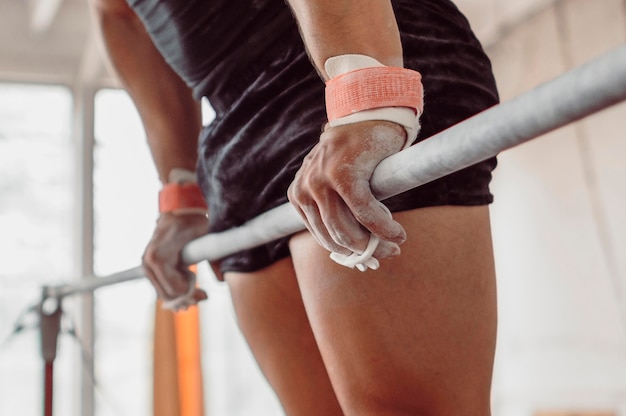35 Science-Backed Cross-Training Tips to Protect Swimmer’s Joints: Simple Routines for Long-Term Performance
Swimming is a low-impact, full-body workout that’s excellent for cardiovascular fitness and muscular endurance. However, the repetitive nature of strokes—especially freestyle and butterfly—can place significant strain on the shoulders, elbows, hips, and knees over time. Joint wear and overuse injuries are common among competitive and recreational swimmers alike.
The solution? Cross-training. By incorporating targeted, joint-protective exercises into your routine, you can enhance mobility, strengthen supporting muscles, and reduce injury risk—all while improving swimming performance. This article outlines 35 evidence-based cross-training strategies, complete with short routines and simple daily habits designed specifically for swimmers.
Why Cross-Training Matters for Swimmers
While swimming builds endurance and power, it doesn’t fully develop all movement planes or stabilize key joints. Cross-training fills these gaps by introducing varied movement patterns, improving proprioception, and balancing muscle development. Studies show that swimmers who engage in structured cross-training report fewer shoulder injuries, better posture, and improved stroke efficiency.

35 Joint-Protective Cross-Training Strategies
1–10: Build Shoulder Stability
- Perform scapular push-ups (3 sets of 10) to strengthen shoulder stabilizers.
- Use resistance bands for external rotations (3x15 per arm).
- Incorporate prone Y, T, W raises to activate the rotator cuff.
- Practice wall slides daily to improve thoracic and shoulder alignment.
- Do prone horizontal abductions to strengthen the rear deltoids.
- Add dead hangs (3x20 seconds) to decompress the shoulder joint.
- Include prone I’s and L’s for serratus anterior activation.
- Use a foam roller for upper back mobility (2 minutes daily).
- Perform controlled arm circles (forward and backward) as a warm-up.
- Practice dynamic shoulder dislocates with a resistance band.
11–20: Strengthen the Core and Hips
- Do planks with shoulder taps (3x30 seconds) to enhance core stability.
- Include bird-dogs to improve lumbo-pelvic control.
- Perform clamshells with a resistance band (3x15 per side).
- Add side planks with hip dips to target the gluteus medius.
- Practice glute bridges with a pause at the top (3x12).
- Incorporate Pallof presses to resist rotational forces.
- Use single-leg deadlifts (bodyweight or light load) for balance and hip strength.
- Do fire hydrants to activate hip abductors.
- Include seated hip internal/external rotation drills with a band.
- Practice diaphragmatic breathing to support core engagement.

21–30: Improve Mobility and Flexibility
- Stretch pecs against a wall (hold 30 seconds per side).
- Perform doorway stretches for the chest and shoulders.
- Use a foam roller on the lats and upper back.
- Practice child’s pose with side reaches for thoracic mobility.
- Do 90/90 hip stretches to improve internal and external rotation.
- Incorporate ankle mobility drills before dryland workouts.
- Stretch hip flexors in a lunge position (30 seconds per side).
- Use dynamic leg swings (front/back and side-to-side) as warm-ups.
- Practice deep squat holds (with support if needed) to improve hip and ankle mobility.
- Add yoga twice a week, focusing on poses like downward dog and pigeon.
31–35: Daily Habits and Recovery Practices
- Stay hydrated to maintain joint lubrication and tissue elasticity.
- Practice 5 minutes of post-swim stretching focusing on shoulders and hips.
- Use a foam roller or massage ball on tight muscle groups 3x per week.
- Ensure proper sleep (7–9 hours) to support tissue repair and inflammation control.
- Track joint discomfort weekly and adjust training volume accordingly.
Sample Weekly Cross-Training Schedule
Integrate these habits into a manageable routine:
- Monday: Shoulder stability + core (10 min)
- Wednesday: Mobility drills + foam rolling (15 min)
- Friday: Full-body dryland (20 min: bands, planks, glute bridges)
- Weekend: Yoga or active recovery swim
Each session can be completed in under 20 minutes, making joint protection sustainable even during intense training phases.
Final Thoughts
Protecting your joints isn’t about reducing swim volume—it’s about training smarter. By integrating these 35 cross-training tips, swimmers can build resilient, balanced bodies that perform better and last longer. The key is consistency: small, daily habits compound into significant long-term benefits.
Start with 3–5 strategies that fit your routine, track how your body responds, and gradually expand. Your joints—and your future self—will thank you.

















